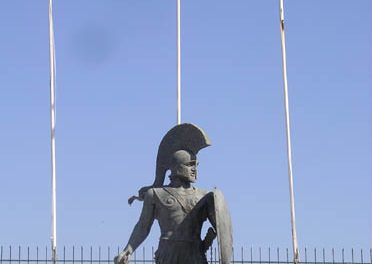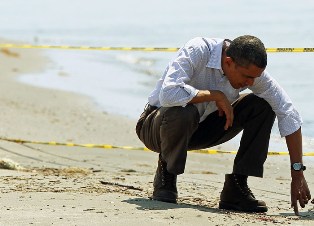Greek astrophysicist Chryssa Kouveliotou has been elected in a group of 83 scientists to the US National Academy of Sciences (NAS) in recognition of distinguished and continuing achievements in original research.
At the start of the year she was named senior scientist for high energy astrophysics within the Science and Technology Office at NASA’s Marshall Space Flight Center.
Kouveliotou, a NASA astrophysicist since 2004 and longtime collaborator with NASA’s science mission, has been the principal investigator on numerous research projects in the United States and Europe.
Throughout her career, she has worked on multiple missions, including the International Sun Earth Explorer-3, the Solar Maximum Mission and the Burst and Transient Source Experiment (BATSE), which flew on NASA’s Compton Gamma-Ray Observatory.
She has received many awards for her work, including the Rossi Prize in 2003. In 2002, she received the Descartes Prize, which recognizes scientific breakthroughs from European collaborative research in any scientific field. She has published 382 papers in refereed journals and has been among the top 10 most-cited space science researchers in published journals worldwide.
A native of Athens, Greece, Kouveliotou received her doctorate in 1981 from the Technical University of Munich, Germany. She earned her master’s degree in science from the University of Sussex, England, in 1977, and her bachelor’s degree in physics from the National University of Athens, Greece, in 1975.
As Kouveliotou has revealed, “When I was still in Greece, I was watching Neil Armstrong making the famous first step on the moon. I was so fascinated that I decided immediately that I wanted to become an astronaut. But there weren’t any Greek astronauts so I chose another path: astronomy”.
Last year, Dr. Chryssa Kouveliotou, an astrophysicist at Marshall Space Flight Center, has been noted among Time Magazine's 25 most influential people in space. The listing was published in Time's recent "New Space Discoveries" edition.
The caption under Kouveliotou's photo in the publication reads: "Gamma-Ray Argonaut. As a child growing up in Greece, Chryssa Kouveliotou spent summer nights lying on the beach searching the sky for falling stars and tracings of satellites. Her determination to explore the heavens graduated to more exotic phenomena. 'My first love was always gamma-ray bursts,' recalls Kouveliotou, of NASA's Marshall Space Flight Center, 'tremendous explosions that rock the universe like nothing else.' One source of gamma rays is magnetars, the tiny, superdense remains of supernovas that generate the most powerful magnetic fields in the universe; imagine a magnet strong enough to pull the keys out of your pocket from a distance halfway to the moon."
Kouveliotou, a NASA astrophysicist since 2004 and longtime collaborator on the agency's science mission, has been the principal investigator on numerous research projects in the United States and Europe. She currently is a co-investigator on the Gamma-ray Burst Monitor, an instrument flying aboard the Fermi Gamma-ray Space Telescope; a Swift associated scientist; and a member of the NuSTAR Science Team. Over her career she has worked on multiple, high-value missions: the International Sun Earth Explorer-3, the Solar Maximum Mission and the Burst And Transient Source Experiment (BATSE), which flew on NASA's Compton Gamma-Ray Observatory.
Throughout her career, Kouveliotou has made numerous contributions to the fields of astronomy and astrophysics. Her research has expanded our scientific understanding of fleeting, transient phenomena in the Milky Way galaxy and throughout the high-energy universe. Besides determining the unique properties of the highly energetic emissions from gamma-ray bursts — the brightest and most powerful events in the universe — she was part of the team which first revealed the extragalactic nature of these sources. She and her team made the first confirmed detection of ultra-dense neutron stars called magnetars – the cinders of stars left over after a supernova, which have incredibly powerful magnetic fields.
A native of Athens, Greece, Kouveliotou received her doctorate in 1981 from the Technical University of Munich, Germany. She earned her master's degree in science from the University of Sussex, England, in 1977, and her bachelor's degree in physics from the National University of Athens, Greece, in 1975.
Kouveliotou has received many awards for her work, including the 2012 Dannie Heineman Prize in astrophysics, the NASA Exceptional Service Medal in 2012, the Rossi Prize in 2003, the Descartes Prize in 2002 and the NASA Space Act Award in 2005. She has published 382 papers in refereed journals and has been among the top 10 most-cited space science researchers in published journals worldwide.
Kouveliotou is a member of multiple international advisory committees, boards and review panels. She was elected chair of the Division of Astrophysics of the American Physical Society, is a member of the Council of the American Astronomical Society and is chair of that organization's High Energy Astrophysics Division. She is a past member of the Committee on Astronomy and Astrophysics of the National Academy of Sciences and is currently the USA/IUPAP liaison for the Astrophysics Committee. She is a Fellow of the American Physical Society and of the American Association for the Advancement of Science.
Read what she is writting at her NASA page
As a child growing up in Greece, I spent many summer nights with my friends on the beach, lying on blankets looking up at the stars. Now and then we'd see a falling star, and we'd play "find a satellite" games. The stars are so far away yet so much a part of us. I always wanted to know more about them.
I was still in Greece when I watched Neil Armstrong take his famous first step on the moon. I was fascinated! I decided then and there that I wanted to be an astronaut, but guess what? There were no Greek astronauts. So I chose another path — astronomy.
Ironically, when I finished college in Greece and asked my astronomy professor how and where to pursue a career in astrophysics, he answered, "I strongly advise against that choice. There's no future in it." To this day I don't know whether he said that because I'm a woman or because he really thought it was a poor choice. No matter — I disregarded him completely and set off to find my way on my own.
Luckily, my parents were open-minded in their thinking and attitudes. I told my father I wanted to leave Greece to go to graduate school, and he answered, "I'd rather have you settled and with a family close to us, but I'm not going to stop you." Remember, I was 21 years old and about to leave not only my home, but my country.
And I did. I earned a Master's degree in England, and then a PhD in Germany. Then I taught Physics and Astronomy at the University of Athens back in Greece for several years, but knew all the while I really wanted to do research. So I spent every vacation, plus my one-year sabbatical, in the United States doing research at NASA.
My first love was always gamma-ray bursts — tremendous explosions that rock the universe like nothing else. They happen when supermassive stars use up all their fuel and collapse. I did my PhD thesis on them in 1981. I was probably the first person ever to earn a PhD with a thesis on these explosions!
When I was at Goddard for my first sabbatical, I had a job working on solar flares. But I moonlighted during evenings, nights, and weekends researching gamma-ray bursts. A colleague who knew that I was spending my "spare" time studying these bursts emailed me and asked me to look in my database to help confirm his observation that a series of the bursts came from the same part of the sky. I jumped at the chance!
Every night, after my daytime research, I carried armloads of tapes – as many as I could carry – down to the basement of the building I worked in. I stayed until midnight every night analyzing tapes, looking for these repeating gamma-ray bursts. Some people said I was wasting my time, but I hit the jackpot! I found them, and in the process became part of the discovery team for a brand new phenomenon called a soft gamma repeater.
When Jerry Fishman contacted me in 1985 and asked me to work for Marshall, it was a turning point in my life. Jerry's group had designed and built an instrument called BATSE to look for gamma-ray bursts. When the instrument was turned on, data started coming in and we discovered something new every day. Those were exciting times!
After all these years, although my research has expanded in many areas, I'm still working on gamma-ray bursts. They still intrigue me just like those falling stars did when I was a child. I've always loved to look at the universe, at how nature expresses itself. I live for the unexpected joy of finding new things, solving mysteries, and understanding the world. And each time I learn something new, I realize how little I know!
But I do know this. No matter what obstacles are placed in your way, follow your dreams and they will take you to the stars



















